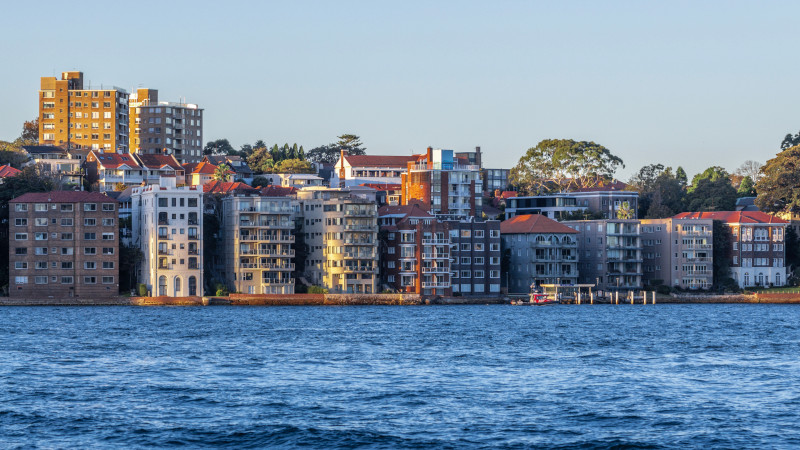[ad_1]
With property values – and those of houses in particular – dominating headlines, what lies ahead for the unit market as Sydney welcomes back office workers and prepares for the return of expats and international students?
With property values – and those of houses in particular – dominating headlines, what lies ahead for the unit market as Sydney welcomes back office workers and prepares for the return of expats and international students?
It’s no secret that property prices have soared during the pandemic. Real estate has emerged as the state’s most important industry from a tax revenue contribution perspective.
Nationally, CoreLogic figures from October put the median dwelling price at $1,071,709 – a 25.23 per cent rise for the year.
Like all growth cycles though, these gains have not been uniform. The boom has seen a widening gap between house and unit prices.
CoreLogic data confirms unit markets recorded a lower rate of growth relative to houses with the trend most evident over a 12-month timeframe.
“In the largest capitals, Sydney house values are up a stunning 30.4 per cent compared to a 13.6 per cent rise in unit values,” the CoreLogic’s October Hedonic Home Value Index says.
Analysis by Domain told a similar story. Domain figures show the 20 fastest-growing house markets across Greater Sydney – including the Central Coast – grew by at least 32.4 per cent over the past year.
In the unit market, growth of a comparatively smaller – but still significant – 15.7 per cent qualified for the top 20.
To state the obvious: for units, these are still very healthy price growth rates. The median price gap between houses and units in Sydney may now be approaching $500,000 but for context, growth in a more expensive asset to start with, will widen the gap despite the same growth in percentage terms.
Nevertheless, there’s a case to be made that there’s still room for units to close the gap.
Now, with lockdown behind us, hopefully for good, it’s natural for investors to ponder what lies ahead for the unit market. Adding to the complexity is the cooling change in market temperature in recent weeks. And there are some other factors at play.
Finance: accessibility and serviceability
Interest rates. Always a hot topic. Especially lately, as the economic recovery outpaces initial expectations.
At its November meeting, the Reserve Bank concluded that: “For inflation to be between 2 and 3 per cent on a sustainable basis, the labour market will need to be tighter and wages growth materially higher than they are at present. The Board will not raise the cash rate until these criteria are met, and is prepared to be patient.”
But the Minutes also referenced “some other plausible scenarios” that could see an official rate rise occur sooner than previously thought.
The banks have already read the writing on the wall. Numerous lenders have begun cutting variables and raising fixed rates after a period of relative stability.
Meanwhile, APRA’s move to increase loan serviceability considerations to 3 percentage points above a loan’s current rate – up from 2.5 percentage points – reduces the borrowing capacity of buyers.
Rate adjustments and serviceability buffers may be subtle changes for now, but they have the potential to contribute to the overall cooling in prices already evident.
As these subtle changes unfold, investors appear to be mobilising. Australian Bureau of Statistics figures show that in September, the month-on-month change in the value of loan commitments for owner-occupied housing fell 2.7 per cent. But the value of loans to investors was up 1.4 per cent.
CoreLogic’s Tim Lawless has a point: “With investors becoming a larger component of new housing finance, we may see more demand flowing into medium to high density properties.”
Open borders
It’s almost two years since the international border was closed to all but a capped number of returning Australian expats, however NSW is now once again welcoming unlimited numbers of returning citizens and residents.
The higher education sector is also eagerly counting down to the return of international students, while various industries hope to address labour shortages once foreign workers are able to return to our shores.
Combined with a return to the CBD office, albeit in a flexible sense for many workers, the outlook for rental vacancy – and ultimately rents – in the inner and middle ring apartment markets appears positive.
While vacancy rates are prone to fluctuations month-to-month, REINSW’s rental vacancy data shows the rate in Sydney remained relatively stable for much of the most recent lockdown. In the time since, we have seen vacancy rates decrease.
In fact, vacancies in the inner, middle and outer rings of Sydney are all lower now than at the same time last year.
Open borders might encourage people back. They might invite money too.
The Foreign Investment Review Board reportedly approved just 7,000 Australian real estate purchases this year, well down on the more than 40,000 approvals granted in 2015-16.
Approval volumes for foreign purchases of residential property were tracking downwards before the pandemic, but there’s a chance that, as competition for units to rent in Sydney starts to intensify, so could competition for units to buy.
Crystal balling is never easy and rarely spot on. But against the odds, the Sydney unit market has proven resilient through COVID.
As the re-opening of the economy gathers momentum and the borders open too, there may be fresh cause for optimism for investors.
[ad_2]
Source link

